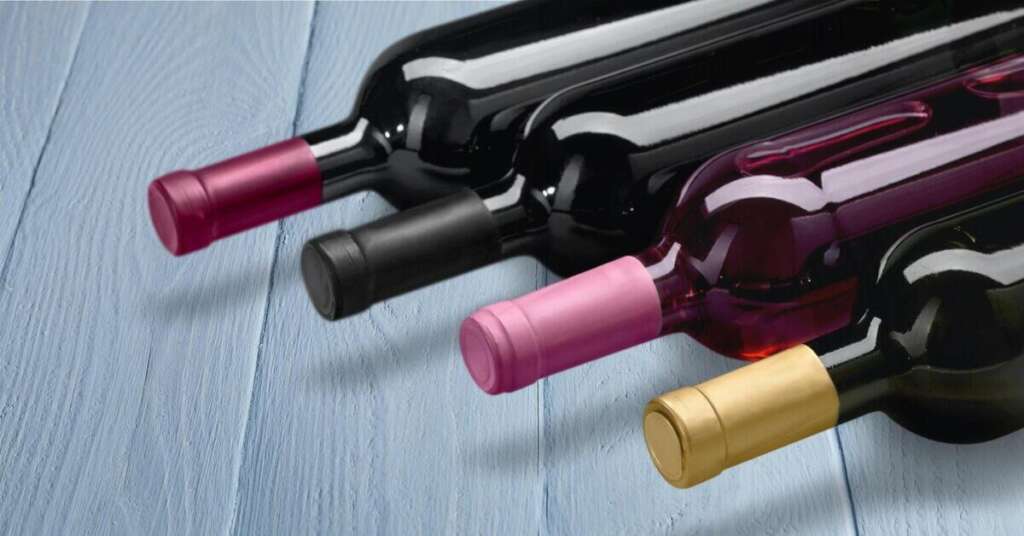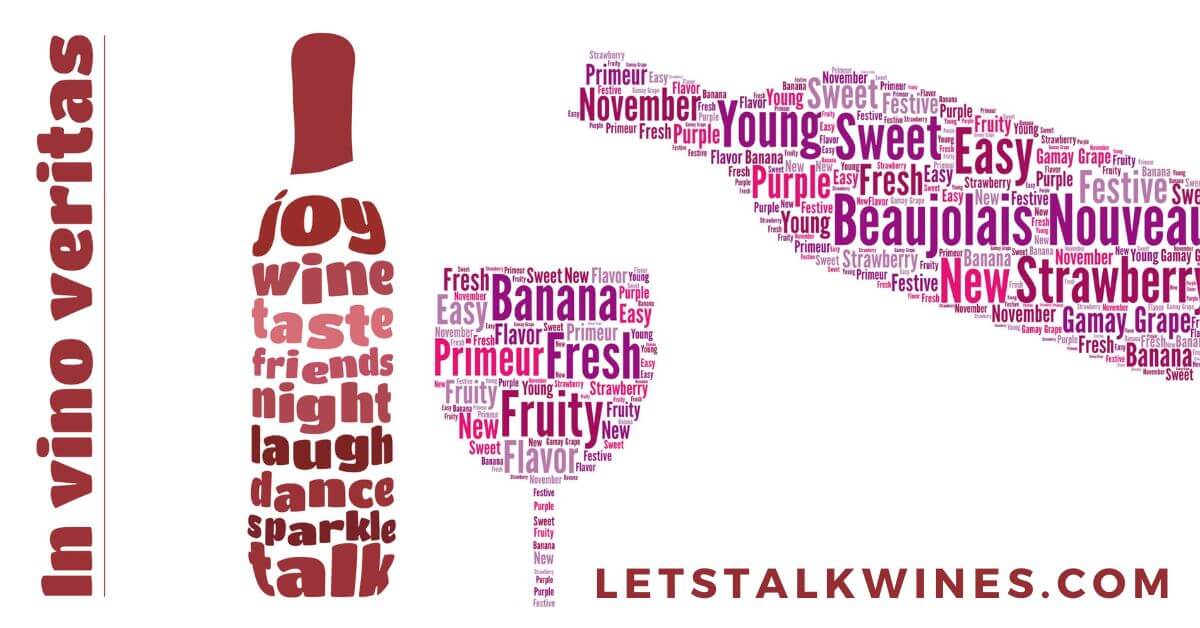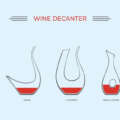The complex world of wine comes loaded with niche vocabulary spanning grape varietals, terroir nuances, production methods, tasting descriptors, and more. Learning wine lingo enables deeper understanding and better communication across wine contexts.
Let’s master over 100 common wine words and phrases to discuss vino fluently!
Grape Varietals – Different Wine Grape Types
Grape Varieties – The specific species and strand of wine grape, largely dictating flavor profiles. Major European vs New World varietals include:
Chardonnay – Most popular white offering crisp apple, citrus and tropical fruit notes.
Sauvignon Blanc – Very aromatic white featuring grassy, gooseberry and herbaceousness.
Riesling – Bright and balanced white with prominent citrus and stone fruit notes.
Pinot Grigio/Gris – Light, crisp everyday white often leaning neutral.
Chenin Blanc – Full-bodied white with apple and quince notes plus ageability.
Pinot Noir – Ethereally light red known for cherry, earth and delicate spice.
Merlot – Softer style red offering plum, dark cherry and herbal flavours.
Cabernet Sauvignon – Firm, structured red with cassis, bell pepper and oak notes.
Syrah – Robust smoky red offering blueberry, bacon and black pepper.
Zinfandel – Jammy, spicy red featuring dark berry fruit and chocolate hints.
Sangiovese – Italy’s foremost red including cherry, leather and tomato leaf notes.
Tempranillo – Spain’s top red with strawberry, tobacco and savory herbality.
Malbec – Inky purple red from Argentina displaying plum, vanilla and cigar box flavours.
Cabernet Franc – Herbaceous red sometimes blended offering raspberry and graphite notes.
Terroir Terminology – Geography & Climate
Terroir – The environmental conditions grapes grow within that determine wine character. Key elements include:
Climate– Macro weather patterns (air temperature, rainfall, sunlight hours) that shape ripening.
Altitude – Vineyard height influencing climate, growing season length and ripeness.
Aspect – The cardinal direction vineyards face, impacting sunlight and warmth.
Slope/Steepness – Angle of vineyards altering drainage, erosion rates and soil types present.
Proximity – Nearby features like large lakes or forests affecting microclimate.
Soil Composition – Balance of sand, silt, clay and stone types retaining water differently while providing minerality.
Grape Clone – Genetic strand of traditional vine suited best historically for the region.
Vines Age – Old vines with deep roots yield more intensity and complexity.
Yields – Production volume per vine controlled for quality concentration.
Canopy Management – Leaf amount, positioning and pruning regimen tailored to site.
Winemaking Processes – Production Methods
Winemaking decisions after harvest also guide style dramatically based on goals per grape and region:
Whole Cluster Press – Grapes crushed together including stems for subtle herbal hints (common in chardonnay).
Destemming – Removing woody grape stems first before crushing, mostly with reds.
Maceration – Post-crush grape skin contact fermenting red wines drawing out color and tannin.
Punchdowns – Pushing floating skin caps down during maceration for extraction using tools or by hand.
Pumpovers – Spraying over the top of skin cap to avoid over-extraction on big reds.
Settling – Letting post-maceration juice sit for clarity via sediment falling out naturally.
Racking – Siphoning cleared wine gently away from sediment buildup into new vessels.
Inoculation – Adding commercial yeast at the start of fermentation to control alcohol and flavor.
Native Yeast – Relying fully on ambient vineyard yeast naturally to drive more rustic fermentation.
Chaptalization – Adding sugar pre-fermentation to boost final alcohol levels often in cooler regions.
Fining – Using agents like egg whites to remove bitter tannins by chemically binding to them before settling/racking.
Filtration – Mechanically filtering wine post-fermentation for clarity and microbial stability.
Oak Exposure – Fermenting and/or aging wine in barrels importing flavor, texture and oxidation.
Yeast Lees Aging – Leaving post-fermentation yeast sediment contacting the wine adding richness.
Malolactic Fermentation – Secondary bacteria conversion to soften acidity, done mostly with bold reds.
Blending – Mixing multiple lots together after initial aging for complexity.
Barrel Hybrids – Alternate oak vessels like clay or concrete eggs importing oxygen mysteriously.
Tasting & Evaluation Language
To properly identify aromas, flavours, structural components and textural elements in formal wine assessment requires familiar sensory vocabulary. Key terms include:
Sight Evaluation
Clarity – Visible sediment level indicating age, faults, instability or messy winemaking.
Color Depth – Lightness/darkness of hue suggesting maturity, extraction method, grape color.
Brightness – Visual vividness and saturation often signifying youthful vigor.
Legs – Clinging drips down the glass indicating higher alcohol and glycerol content.
Nose Assessment
Intensity – How pronounced aromas project, from subtle to extremely aromatic.
Complexity – Layering of multiple distinguishable aromas intermingling.
Aroma Wheel – Mental catalog of familiar odors used identifying specific notes detected like blossoms, tar, butter and anise. Experts recognize thousands explicitly.
Palate Appraisal
Sweetness – Level of detectable residual sugar remaining post-fermentation, from bone dry to very sweet.
Acidity – Sharpness on the palate ranging from low to high, key for balance.
Tannin – Mouth-drying bitterness from compounds securing color and longevity.
Body – Viscosity and weight on the tongue, classified light to full.
Finish – Length of sustained flavors after swallowing, from short to persistent.
Possible Flavors
Fruit profile – Grape types show certain fruits like melon, pear, strawberry and blackberry.
Savory profile – Salty, brothy, umami character from fermentation and aging.
Wood profile – Oak barrel notes like spice, cocoa and vanilla (if used).
Bottle Age profile – Tertiary notes like toast, nuts, dried fruits and honey.
Itemized Wine Scoresheet
Nose – Intensity, complexity and main aroma traits identified.
Palate – Sweetness, acidity, tannin, body and finish evaluations.
Flavors – Main fruit, savory, wood and age flavors noted.
Conclusions – Character summary, tasting observations, pairing ideas.
Scores – 0-100 scale rating precision aspects individually.
Wine Age Classifications
As wines mature different aroma, flavor and structural personalities emerge. Some basic age bracket vocabulary includes:
Non-Vintage (NV) – No year stated on bottle, implying youngest bulk wine blend component. Most common with sparkling wines and some sherries.
Vintage Year – Specific year listed ensuring majority of that wine came from the stated calendar harvest. Requirements vary by region.
Drink Young – Usually under 3 years since vintage. Exhibits primary fruit purity but less complexity.
Enjoy Now – Typically 3-6 years post vintage. Retains lively acidity and fruit with modest bottle aged layering coming forward.
Peak Drinking Window – The ideal maturity sweet spot a producer recommends for that label, like 5-15 years post vintage. Showcasing both fruit integrity and tertiary complexity simultaneously.
Mature – Wines 15-30+ years old since vintage. Fruit often fading slowly or fully absent. Displaying secondary and bottled aged notes prominently.
Legendary Vintage – Single year with perfect growing conditions still renowned for 30-60+ years afterwards. Most prestigious Bordeaux vintages like 1945.
Back Vintage – Any older wine well past it’s initial drinking prime but still intact and drifting into gentle decline from age. Enthusiasts pay premiums exploring these museum pieces exhibiting graceful old age.
Wine Lingo of Flaws & Faults
In formal wine assessment, any distracting odor or flavor counts as a wine flaw decreasing enjoyment. Some common deficiencies include:
Cork Taint – Moldy basement aroma from damaged corks contaminating wine post-bottling.
Oxidation – Excess exposure to oxygen browning color early and showing tired nutty sherry notes outpacing maturing fruit.
Brettanomyces – Rogue “brett” yeast metabolic funk imparting bandaid, bacon or barnyard stall attributes, polarizing depending on threshold.
Volatile Acidity – Vinegary sharpness from increased vinegar bacteria converting wine uncomfortably.
Heat Damage – Excess transport or storage temperature spikes cooking aromas and flavors stewed, pruney or porty cloying.
Reduction – Exaggerated sulfur compounds smelling struck match, skunky or rotten eggs due to lack of oxygen integration during winemaking.
Overoaked – Aggressive wood overtakes delicate grapes instead of seasoning subtly due to mismanaged barrels.
Vegetal – Unripe herbal greenness like bell pepper and asparagus overriding intended fruit.
Bitterness – Excessive tannins left drying and unpleasantly tannic without balancing sweet fruit.

Industry Terms – Winemaking & Viticulture Roles
Wine originates not from factory assembly lines but rather small, agriculture-rooted producers. Here are key personnel titles:
Winemaker – Oversees all production decision-making from vineyards through cellaring and bottling. Guiding wine’s style through inputs and process tweaks in the cellar.
Cellar Hand – Performs manual crush pad, tank and barrel work assisting winemakers. Includes pump overs, racking, inoculations plus cellar and equipment cleaning.
Lab Technician – Runs chemical analysis on ferments assessing progress with tools like chromatography and spectrometry and microscopes.
Viticulturist – Vineyard manager directing planting, trellis systems, irrigation, canopy positioning, organic/biodynamic applications and harvest timing.
Harvest Intern – Seasonal assistant helping hand-pick and transport selected grapes to the winery once ripening peaks.
Tasting Room Associate – Pours wines for visitors to sample and sells bottles and wines club memberships onsite. Engages guests educating them on the wines, history and winemaking style.
Distributor Rep – Works for a wholesale importing company managing inventory and pitching to restaurants and shops getting wines expanded retail placement off-premise.
Sommelier – Restaurant beverage director curating the wine list offered to patrons and advising food pairings. Ensures proper storage, service and glasses washing for wines by the glass.
Wine Retailer – Brings in, displays and hand sells wines at specialty wine stores, liquor stores, grocery stores informing curious consumers on producer profiles and flavor profiles.
Regional Wine Terminology
Most countries outline designated winegrowing regions steering suitable wine grape growing based on consistent climate conditions historically. Different nations utilize varied terminology:
American Viticultural Areas (AVAs) – Legally defined grapegrowing boundaries in the USA denoted by unique names like Napa Valley, Willamette Valley or Finger Lakes. Currently 244 AVAs with more annually.
French Appellations – Strict delineated zones like Burgundy subdivided into even smaller winemaking areas by commune like Vosne-Romanée, Gevrey-Chambertin and Morey St. Denis dictating permitted grapes and pruning systems.
Italian Denominazione di Origine Controllata (DOC) – Italian “controlled designation of origin” labelling laws quality controlling lower tier regions. Higher Classification (DOCG) denotes elite zones like Barolo, Chianti Classico and Brunello di Montalcino.
Spanish Denominación de Origen (DO) – Regional appellation statuses like DOCa Rioja and DO Toro ensuring wine origin authenticity for consumers.
German Prädikatswein – Tiered quality designation based on grape ripeness at harvest rather than geography. Ranges from Kabinett (light) to Spätlese (Select late harvest) and Auslese (botrytized).
South African Wine of Origin (WO) – Legally defined “wards” within districts and larger geographical units classifying legitimacy by origin township for bottlings like Stellenbosch, Franschhoek and Swartland.
Australian Geographic Indications (GIs) – Regions designated legally qualifying wine authenticity include Barossa Valley, Coonawarra, Yarra Valley and Margaret River. Enables export trust.
New Zealand Winegrowing Regions – Key zones include Marlborough for Sauvignon Blanc, Martinborough for Pinot Noir, Waipara for Riesling and Central Otago for aromatic varieties and Pinot Noirs.
Summary
Congrats digesting over 100 common wine words spanning science, production, sensory evaluation and industry concepts! From clone to yeast lees aging, and clone to phenolic ripening, you now hold vocabulary enabling sophisticated wine discussion and informed reading on relevant wine topics in the future. Leverage precise lingo separating casual fans from true insiders. Cheers to elevated wine fluency!



